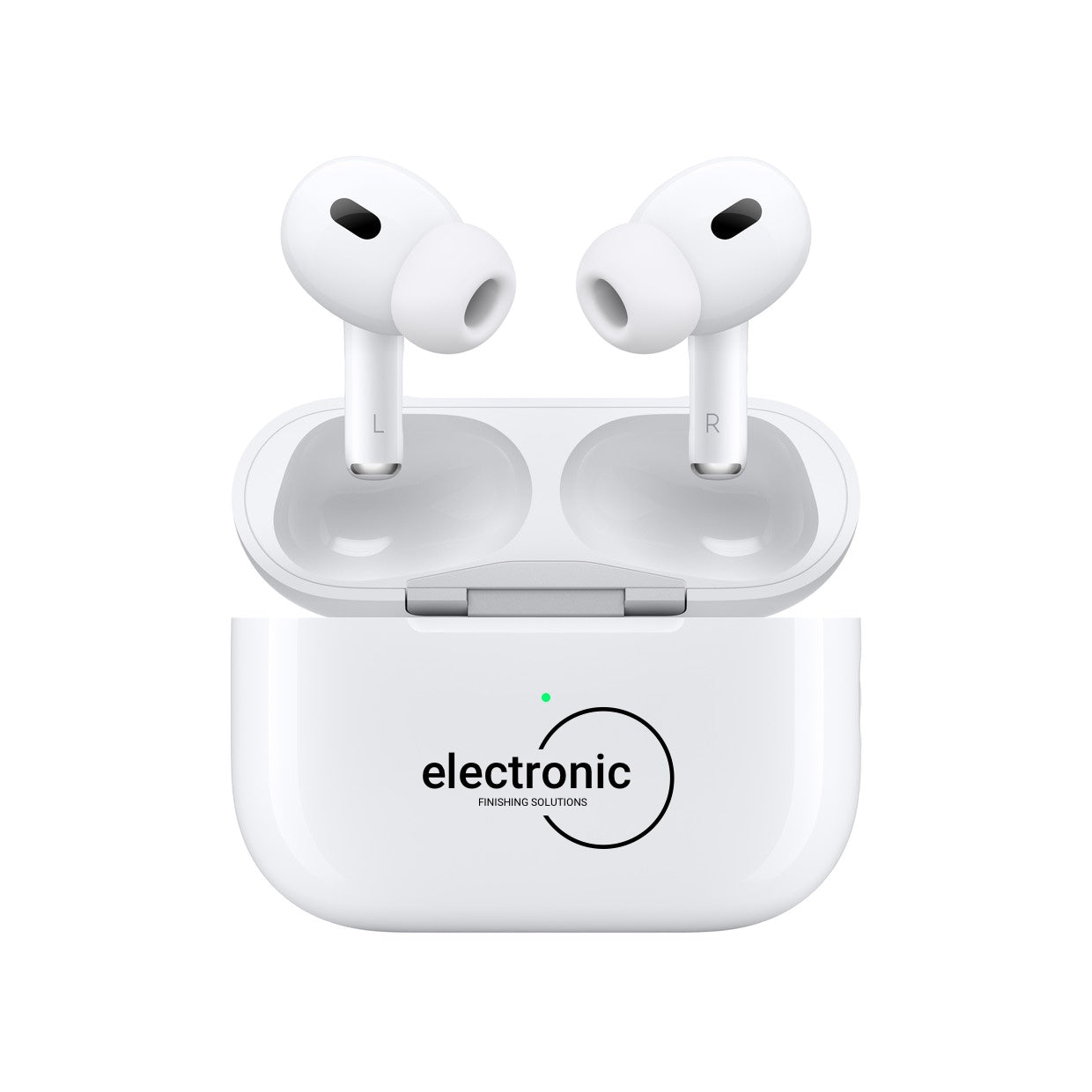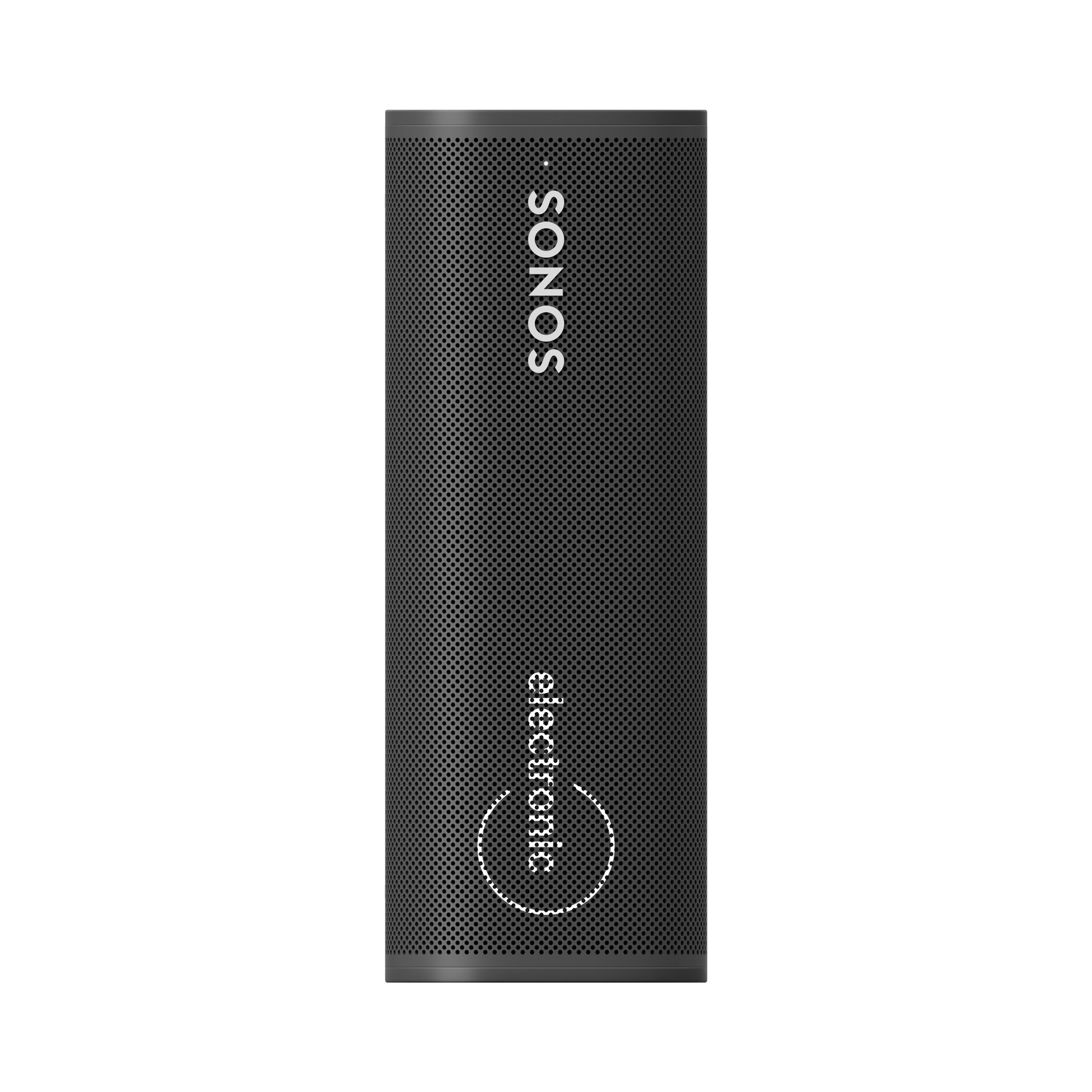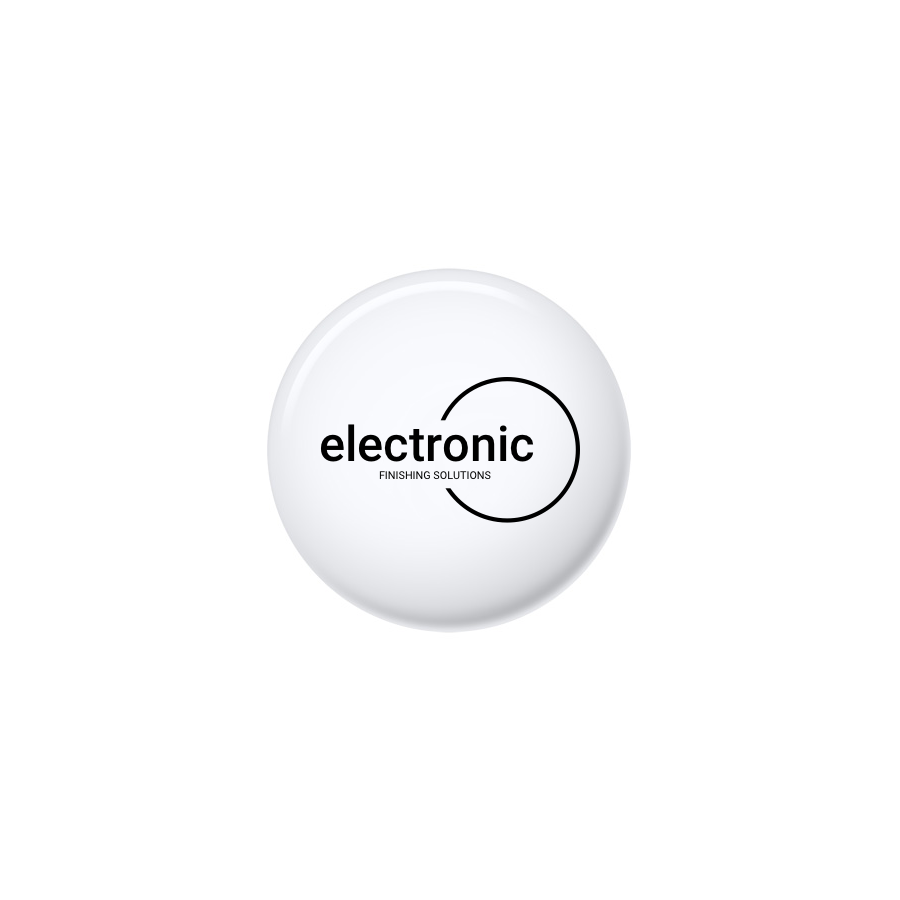Why Your Event Marketing Strategy Template Is Everything

Let's be honest: events are a big investment. They require time, money, and meticulous planning. Without a solid strategy, even the most promising events can fall short, failing to deliver a worthwhile return. An event marketing strategy template is the key to turning your event from a potential cost center into a powerful growth driver.
This template serves as your roadmap, outlining the steps to achieve measurable results. It ensures every event detail, from pre-event buzz to post-event follow-up, contributes to a cohesive and impactful experience. This strategic approach is the difference between events that boost ROI and those that simply break the bank.
The Power of Strategic Planning
The impact of in-person events is significant. In 2025, 78% of event organizers considered in-person events their organization's most effective marketing channel, highlighting the value of face-to-face connection. This emphasizes the importance of a strategic approach. Two-thirds of attendees report a more positive brand perception after an event, demonstrating the potential for strengthening customer relationships. Find more insightful data here: Learn more about event marketing statistics.
A well-defined event marketing strategy template also allows you to:
-
Set Measurable Objectives: Define clear goals aligned with your overall business objectives. This makes it easy to track your event's performance and demonstrate its value.
-
Define Your Target Audience: Understand your ideal attendee, their needs, and motivations. This helps you tailor the event and marketing messages for the best results.
-
Develop a Compelling Value Proposition: Clearly communicate the unique benefits of attending your event, attracting the right people and maximizing registration.
Avoiding Common Pitfalls
A strategic template helps avoid common event planning mistakes. Without a clear budget, costs can quickly escalate. A template helps you allocate resources effectively, optimizing your ROI.
A template also promotes better time management. By outlining key milestones and deadlines, you can keep your event on schedule and avoid last-minute chaos. This proactive approach leads to a more polished and professional event. Ultimately, the right event marketing strategy template allows you to create memorable experiences that resonate with your audience, driving business growth and achieving lasting results.
Building Your Strategic Foundation That Actually Works
Every successful event starts with a solid plan. But many event marketing strategy templates miss key ingredients. This isn't about making just another document. It's about building a strategic roadmap that gets you real results. This section covers the core components that separate winning campaigns from the rest.
Defining Measurable Objectives
Begin by setting measurable objectives that match your overall business goals. For instance, if you want to boost brand awareness, your objective might be to get a certain number of social media mentions during the event. You might also aim for specific lead generation targets or a percentage increase in website traffic after the event. This gives you solid metrics to track progress and show the value of your event.
Understanding Your Target Audience
Knowing your target audience inside and out is essential. This means going deeper than simple demographics. You need to pinpoint their needs, motivations, and pain points. The infographic below shows a straightforward three-step process for creating an effective attendee persona:
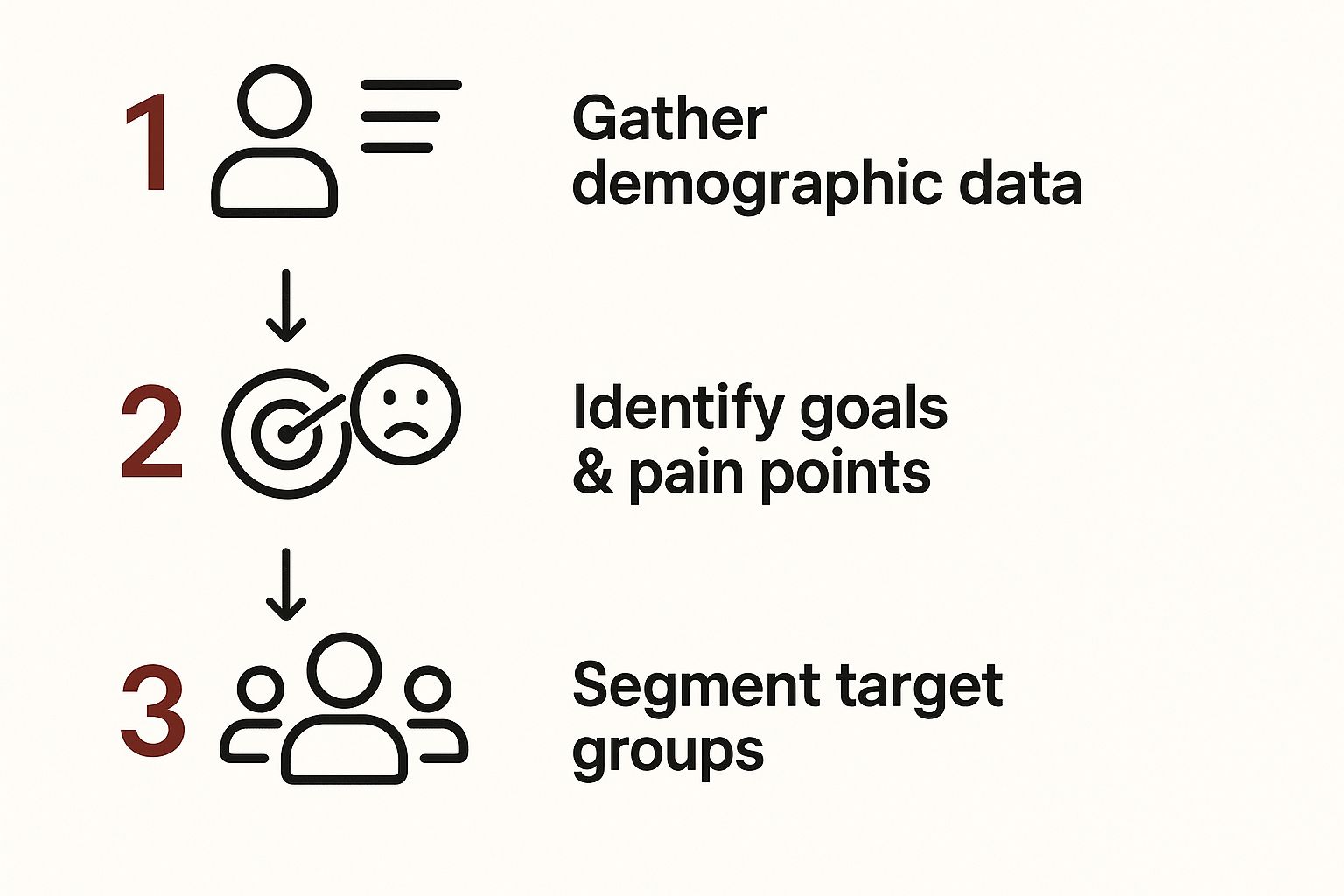
This ensures you're building an event and crafting marketing messages that connect with the right people. By understanding your audience, you can tailor your event to their specific needs and deliver real value.
Creating a Realistic Timeline
Just as vital as your audience and objectives is the timeline. A good event marketing strategy template has a realistic timeline that considers potential roadblocks. Break the entire process into smaller steps with clear deadlines. This might mean scheduling things like venue booking, confirming speakers, creating marketing materials, and handling registration. This organized method helps avoid delays and makes sure your event runs smoothly. For more ideas on maximizing your brand's impact through strategic event planning, see our guide on top promotional event ideas to boost your brand.
The following table outlines the core components of an effective event marketing strategy template. It details the priority of each element, the implementation timeline, and the key deliverables.
Event Marketing Template Core Components
| Component | Priority Level | Timeline | Key Deliverables |
|---|---|---|---|
| Defining Measurable Objectives | High | Before Event Planning | Documented Objectives aligned with Business Goals |
| Understanding Your Target Audience | High | Before Event Planning | Detailed Attendee Persona |
| Creating a Realistic Timeline | High | During Event Planning | Project Schedule with Task Breakdown and Deadlines |
| Venue Booking | High | Early Stages of Planning | Signed Contract with Venue |
| Speaker Confirmations | Medium | Mid-Stages of Planning | Confirmed Speaker Agreements |
| Marketing Material Development | Medium | Ongoing throughout Planning | Marketing Collateral (e.g., website, social media posts, emails) |
| Registration Management | Medium | Ongoing throughout Planning | Registration Platform Setup and Management |
This table provides a clear overview of the essential elements for event planning success. By addressing each component, you'll be well-equipped to manage your event effectively. Focusing on these fundamentals sets the stage for a successful and impactful event.
Mastering Virtual And Hybrid Event Marketing Strategies
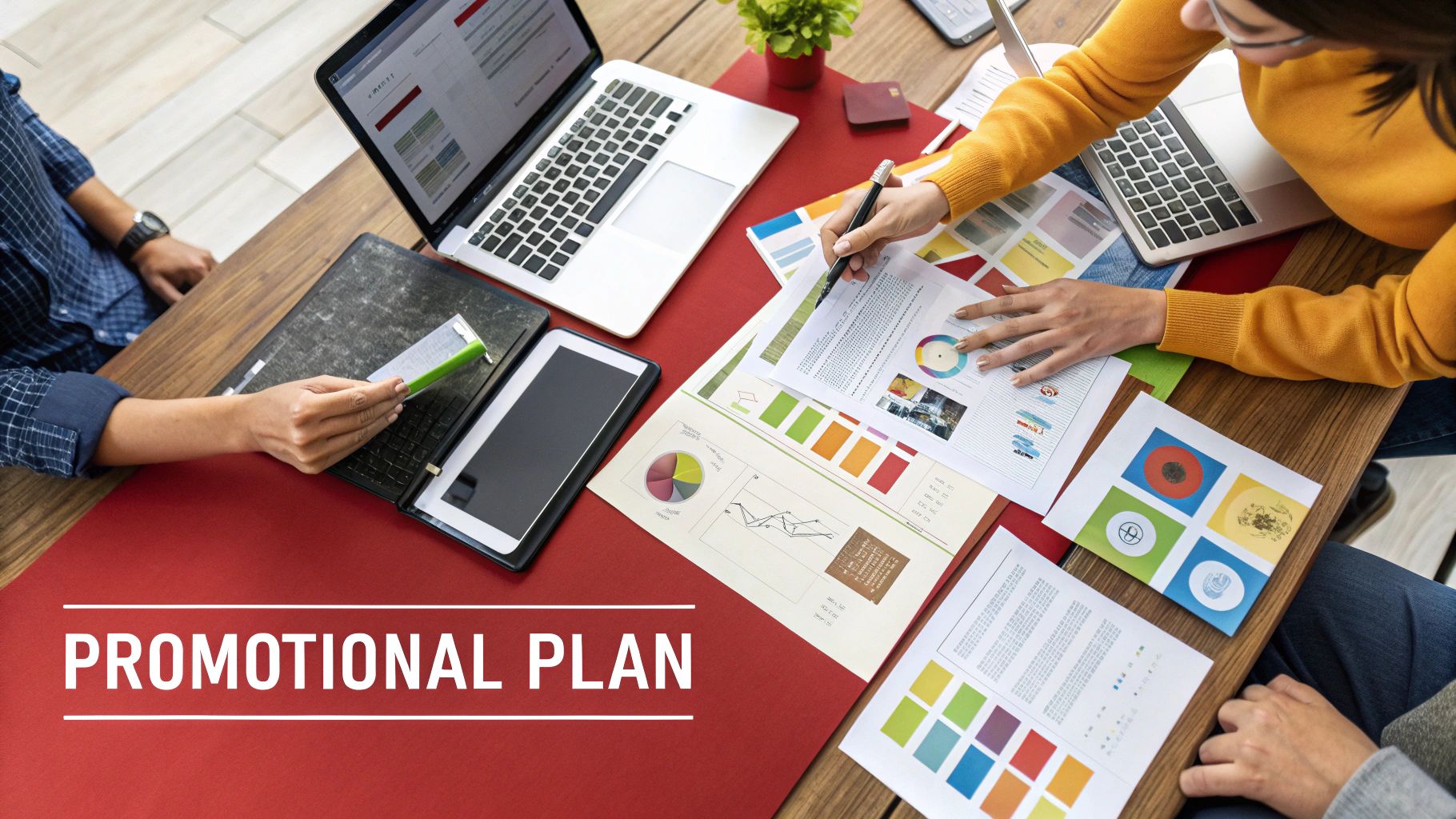
The way we connect has changed, and events are leading the charge. This means your event marketing strategy template must adapt to both virtual and hybrid formats. Successful event organizers are using these new formats to broaden their audience and create memorable experiences. Let's explore how to effectively manage this evolving event landscape.
Marketing Considerations For Virtual Events
Virtual events offer unique opportunities and distinct challenges. Choosing the right virtual event platform is critical. Your platform must align with your goals, whether they involve live streaming, interactive breakout sessions, or virtual networking opportunities. Engaging a remote audience requires a fresh approach. Think interactive polls, live Q&A sessions, and dedicated virtual networking lounges.
Consider adding gamification to boost participation and interaction. This could include virtual badges for attending sessions, interactive quizzes, or real-time polls. These tactics can hold attendee interest and improve overall event satisfaction.
Deciding on the Right Event Format
Choosing between virtual, in-person, and hybrid events depends on your goals and target audience. A virtual event excels at reaching a global audience, while an in-person event emphasizes networking and direct interaction. Hybrid events blend the best of both worlds, allowing for both in-person and virtual attendance. This flexibility expands your reach while preserving the value of face-to-face connections. The virtual events market is booming, reflecting the growing need for digital event marketing. By 2025, the global market is expected to hit $236.69 billion, up from $193.45 billion in 2024. Learn more: Find more detailed statistics here.
A good framework for making this decision involves evaluating your budget, target audience location, and event objectives. If networking is key, a hybrid or in-person event might be better. If budget is a concern, a virtual event can significantly lower costs. For more ideas on improving in-person or hybrid event engagement, check out this resource: 8 Best Conference Swag Ideas to Impress in 2025.
Creating Seamless Hybrid Experiences
Hybrid events require a unified event marketing strategy template that connects digital and physical touchpoints. This means delivering a consistent brand experience across both formats. Ensure your event website, marketing emails, and virtual platform reflect your brand guidelines.
Think about how to create compelling experiences for both in-person and virtual attendees. You might offer exclusive content for each group or use technology to link attendees across both formats. By addressing these elements, you can ensure your hybrid event delivers value to all participants and supports your event marketing objectives.
Using Technology and Personalization for Maximum Impact
Modern event marketing relies heavily on technology and personalized experiences. It's all about integrating smart tech solutions and crafting experiences that truly resonate with each attendee. Let's explore how marketers are using AI, data analytics, and personalization tools to create events that feel individually tailored.
Leveraging Technology for Enhanced Marketing
Technology is reshaping the way we plan and execute events. AI-powered chatbots, for instance, can handle attendee inquiries, allowing your team to focus on other crucial tasks. Automated email sequences, triggered by specific attendee actions, deliver timely information and keep engagement high. Eventbrite is a popular platform that streamlines processes like registration, ticketing, and communication, making event logistics much smoother. These tools not only save valuable time but also elevate the overall attendee experience.
Data analytics platforms offer valuable insights into attendee behavior, revealing their interests and preferences. This data can then be used to personalize future events and marketing messages. For example, if data reveals high engagement with particular speakers or sessions, you can incorporate similar content into future events. This data-driven approach ensures your events continually adapt to meet attendee needs.
The Power of Personalization
Personalization is much more than just using someone's name in an email. It's about creating an event experience that feels custom-built for each individual. This involves tailoring the experience to distinct attendee segments. First-time attendees, for instance, might receive a welcome email with tips for navigating the event. Returning attendees, on the other hand, might receive exclusive access to a VIP lounge.
The integration of technology and personalization in event marketing is gaining significant traction. By 2025, 24% of event professionals plan to prioritize technological advancements, while 64% of consumers report that personalized brand experiences increase their purchase likelihood. A striking 89% of marketing decision-makers consider personalization essential for future success. Want to delve deeper? Find more detailed statistics here.
Creating Personalized Marketing Journeys
Personalized marketing journeys guide attendees through each stage of the event lifecycle, from initial awareness and registration to post-event follow-up. This can involve targeted email campaigns, personalized content recommendations, and even customized event agendas.
These personalized touchpoints enhance the attendee experience and foster stronger connections with your brand. For example, based on attendee data, you can suggest relevant sessions, networking opportunities, and even local restaurants.
However, ethical data collection and usage are paramount. Transparency is key. Be upfront about how you collect and use attendee data. Always give attendees the option to opt out of personalized communications. This builds trust and ensures attendees feel comfortable sharing their information. By balancing personalization with ethical considerations, you can cultivate stronger, more respectful relationships with your audience.
Pre-Event Marketing That Builds Real Momentum
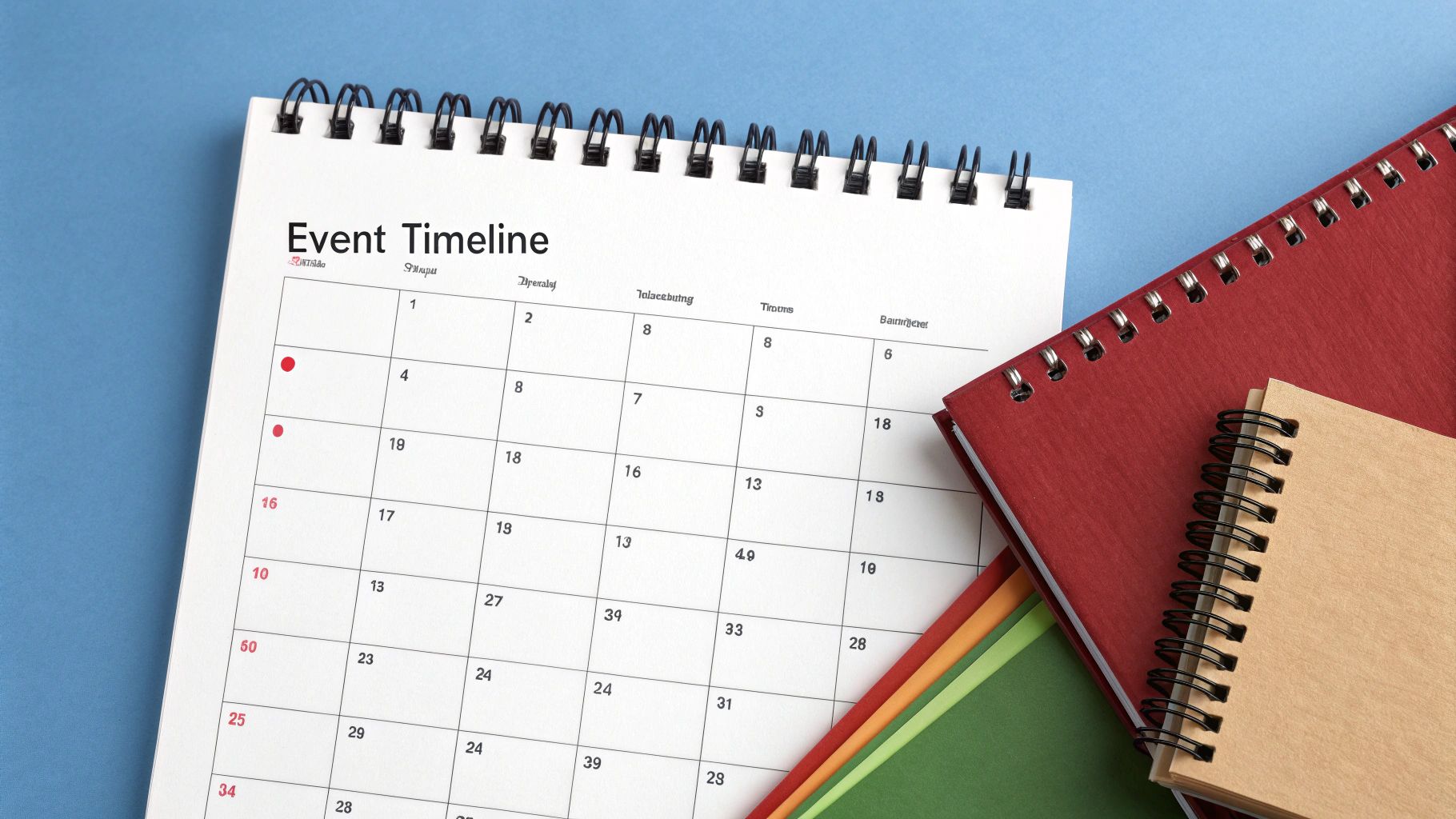
The success of any event depends heavily on the excitement generated beforehand. This means a solid pre-event strategy is essential to your event marketing strategy template. It's more than just sending out emails; it's about crafting an experience people won't want to miss.
Segmenting Your Audience For Targeted Outreach
Knowing your audience is the first step in effective pre-event marketing. Audience segmentation allows you to customize your message for different groups. For instance, reaching out to potential sponsors on LinkedIn might be more effective, while engaging early-career attendees on Instagram could yield better results. This focused approach ensures your message resonates.
Developing A Multi-Channel Campaign
A successful pre-event campaign uses a variety of channels. Think email marketing, social media engagement, partnerships, and even public relations. Each channel has a unique role in building excitement. Email marketing delivers personalized information, while social media platforms generate buzz and encourage sharing.
Content Marketing That Positions Your Event
Showcasing your event's value requires compelling content. Create blog posts, articles, and social media updates highlighting key speakers, insightful sessions, and valuable networking opportunities. This positions your event as a must-attend experience for learning and connection.
Generating Buzz With Speaker Announcements
Strategic speaker announcements can create significant interest. Eye-catching graphics and engaging speaker bios can generate excitement. This effectively turns your speakers into event advocates. For additional engagement ideas, check out this resource: Top 10 Best Conference Giveaways for 2025.
Leveraging Social Proof Effectively
Sharing testimonials, past event highlights, and registration numbers builds trust and encourages sign-ups. This social proof demonstrates your event's value subtly. It provides potential attendees with tangible evidence of past successes.
Building Strategic Partnerships
Collaborating with relevant organizations expands your reach. This can involve cross-promotion, co-hosted webinars, or joint marketing efforts. These partnerships boost credibility and broaden your promotional activities.
Timing And Consistent Messaging
Timing is critical in pre-event marketing. Develop a clear timeline outlining when to launch various promotional activities. Consistent branding and messaging across all channels is key, while also adapting content to resonate with each specific channel and audience segment.
To illustrate a practical application of these principles, consider the following timeline:
Before presenting the table, a brief explanation of its purpose is helpful. This table provides a structured approach to organizing your pre-event marketing efforts, ensuring a consistent flow of activities leading up to your event.
| Timeline | Marketing Activity | Channel | Success Metrics |
|---|---|---|---|
| 8 Weeks Prior | Launch early bird registration | Email, Social Media | Number of early bird registrations |
| 6 Weeks Prior | Announce keynote speakers | Social Media, Press Release | Reach, engagement on speaker announcements |
| 4 Weeks Prior | Begin content marketing campaign (blog posts, articles) | Website, Social Media | Website traffic, social media shares |
| 2 Weeks Prior | Send reminder emails to registrants | Open and click-through rates | |
| 1 Week Prior | Final social media push, highlight networking opportunities | Social Media | Engagement, reach, new followers |
| Day of Event | On-site social media updates | Social Media | Event hashtag usage, social media mentions |
By implementing these pre-event marketing strategies, your event marketing strategy template helps ensure a strong pre-event push, paving the way for a successful and well-attended event. These insights demonstrate how strategic planning and consistent execution contribute to maximizing event registration and attendee engagement.
During And Post-Event Marketing That Maximizes Value
Your marketing strategy shouldn't lose momentum when the event begins. In fact, some of the most valuable opportunities emerge during and after the event itself. This phase of your event marketing strategy template focuses on maximizing impact long after the final attendee departs.
Real-Time Engagement During The Event
During the event, concentrate on creating shareable moments. Imagine photo booths with fun props, interactive polls during presentations, or even a dedicated social media wall displaying live tweets and Instagram posts. These interactive features encourage attendees to share their experiences organically, broadening your event's reach beyond the physical location. For instance, offer branded giveaways that attendees will be excited to showcase on social media, further amplifying your brand’s visibility.
Social Media Amplification
Boost these organic shares by actively engaging on social media platforms like Twitter and Instagram. Retweet and share attendee posts, respond to comments, and consistently use your event hashtag. This maintains online buzz and cultivates a sense of community surrounding your event. Consider live-streaming key sessions or speaker highlights to engage a larger audience and provide a sneak peek into the event experience. You might use a platform like YouTube for this.
Post-Event Nurture Sequences
After the event concludes, your event marketing strategy template transitions to nurturing valuable leads. Develop post-event nurture sequences delivering targeted content based on attendee interests and engagement. This might involve follow-up emails with session recordings, links to pertinent resources, or invitations to future webinars. This sustained engagement keeps your brand at the forefront and guides prospects toward conversion. Check out our guide on creating wow-worthy event giveaways.
Building Long-Term Relationships
Beyond immediate results, focus on fostering lasting relationships. Send personalized thank-you notes to attendees and speakers, offer exclusive discounts for upcoming events, and generate opportunities for continued engagement through online communities or forums. This cultivates loyalty and encourages repeat attendance.
Repurposing Event Content
Maximize your event content’s value by repurposing it into ongoing marketing materials. Transform session recordings into blog posts or podcasts, develop compelling case studies highlighting event successes, and collect genuine testimonials from satisfied attendees. These valuable assets can be utilized in future marketing campaigns, extending the lifespan of your event and providing continued value long after its conclusion.
Gathering Feedback and Evaluating Success
Finally, collect feedback via post-event surveys to understand what resonated with attendees and identify areas for improvement. Analyze your event metrics against your initial goals to gauge the effectiveness of your event marketing strategy template. This data informs future event planning and ensures continuous improvement in your marketing initiatives. By prioritizing these during and post-event strategies, you can transform a single event into a powerful catalyst for sustained business growth.
Key Takeaways
Your event marketing strategy template should be a dynamic tool, constantly evolving to meet the specific needs of each event. It's not a one-size-fits-all solution, but a flexible framework to guide your marketing efforts. From defining crystal-clear objectives to utilizing technology and collecting post-event feedback, each component plays a vital role in creating a successful and impactful event.
Focus on Measurable Objectives
Begin by aligning your event goals with your overall business objectives. Whether your focus is lead generation, brand awareness, or customer engagement, define specific, measurable metrics to track your progress and demonstrate a return on investment (ROI). This ensures your event directly contributes to your company's bottom line.
Know Your Audience Inside and Out
Understanding your target audience is paramount. Identify their needs, preferences, and what motivates them. This crucial information will shape your event format, content, and marketing messages, leading to a more relevant and engaging experience for attendees.
Embrace the Power of Technology
Integrating technology can significantly enhance every facet of your event marketing. From automated email campaigns using platforms like Mailchimp to data-driven analytics using tools like Google Analytics, technology streamlines processes, personalizes the attendee experience, and maximizes the impact of your efforts. Consider using event management platforms like Eventbrite for registration and email communication.
Pre-Event Momentum Is Key
Generating excitement before your event is essential for boosting attendance. Utilize a multi-channel approach that incorporates email marketing, engaging social media content, and valuable content creation that highlights the benefits of attending. This consistent effort builds anticipation and positions your event as a must-attend experience.
Extend Value Beyond the Event
The marketing journey doesn't end when the event is over. Facilitate real-time engagement during the event, encourage social media sharing, and develop post-event nurture campaigns. This extends the value of your event, cultivates long-term relationships with attendees, and maximizes the impact of your efforts.
Adapting Your Template
Tailor your event marketing strategy template to the specific type and format of your event. Whether you're hosting a virtual conference using platforms like Zoom, a hybrid trade show, or an in-person product launch, adapt your strategies and tactics accordingly. This ensures relevance and maximizes the effectiveness of your marketing plan.
Continuous Improvement Through Feedback
Collecting post-event feedback is invaluable for improving future events. Utilize surveys, analyze event metrics, and gather testimonials to understand what resonated with attendees and identify areas for improvement. This iterative approach ensures your events continuously evolve and deliver increasing value.
Ready to elevate your brand with high-quality, customized promotional electronics? Explore how Electronic Finishing Solutions can help you create memorable event experiences that make a lasting impact. Discover how we can enhance your next event.

